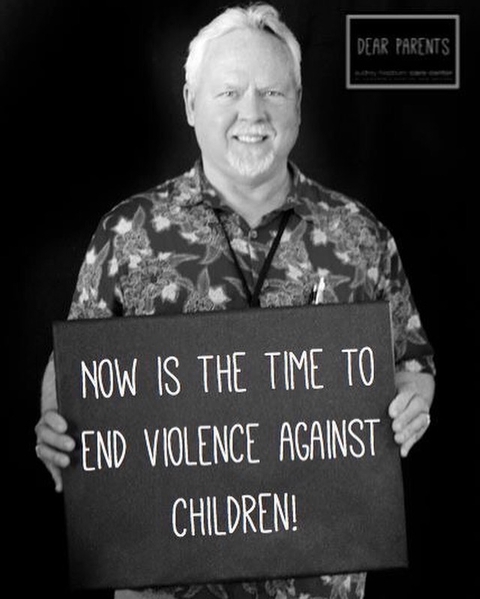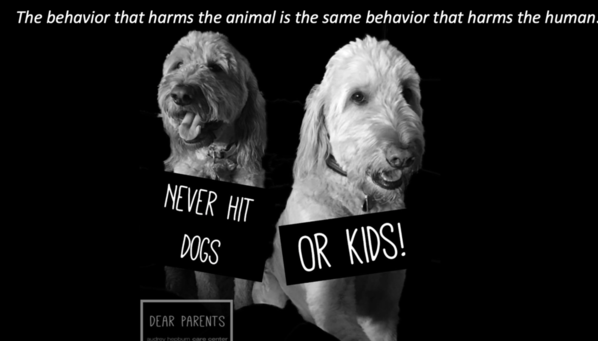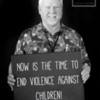Dr. David Corwin, a professor of pediatrics at the University of Utah School of Medicine, told me an astonishing fact recently: 61 countries around the world have banned spanking and hitting children, with another 50 pledging to do so. But the United States is far behind in addressing this kind of physical violence toward children.
And that was just one of three amazing elements of my recent three-hour interview with him.
No. 2: It was the longest interview I’ve ever conducted for this site.
No. 3: I never wanted it to end.
 The U.S., Corwin said, is the only country in the world that has not ratified the United Nation’s Convention on the Rights of the Child, which defines children’s rights to protection, education, health care, shelter, and good nutrition.
The U.S., Corwin said, is the only country in the world that has not ratified the United Nation’s Convention on the Rights of the Child, which defines children’s rights to protection, education, health care, shelter, and good nutrition.
That’s one of the reasons Corwin teamed up with several like-minded professionals andorganizations that launched The National Initiative to End Corporal Punishment, or NIECP, in 2018. The initiative was an outcome of a National Summit to End Corporal Punishment in the U.S., held in late 2017. The Summit brought together leading national experts in the field of violence to children and child maltreatment along with marketing and communications experts.
NIECP organizes training and promotes the adoption of No Hit Zones, where parents and families agree that no hitting will exist by parents against children, children against other children, children against parents, or adults against adults. Many doctors’ and psychologists’ professional organizations are signing onto this initiative, and Corwin says many pediatricians now recommend alternatives to spanking.
Research shows that “there is little evidence of anything positive coming from spanking,” he said.
Recent analyses of the ACE Study data show that spanking and corporal punishment operate like the original ACEs. It adds independent, additional harm similar to emotional and (other) physical abuse, and is associated with increased substance abuse and anxiety as an adult.
“Spanking looks like another ACE,” Corwin concluded.
NIECP is producing one-minute videos with testimonials from people who have decided to raise their children without hitting them. It hopes these videos will go viral (in a good sense). NIECP also is helping support a national survey examining attitudes toward corporal punishment of children and expects other similar studies will be released soon.
The research projectthat changed everything
Although a major ACE advocate and self-described zealot as well as a forensic expert on child maltreatment and trauma, Corwin himself grew up in what he describes as an otherwise idyllic home in southern Michigan, with an older sister and two loving parents. He said his childhood resembled life on the popular late 50s-early 60s TV program, “Leave It to Beaver.”
“I had no knowledge of child abuse until I was in medical school,” he said.
During his first year of a child psychiatry fellowship at UCLA’s Neuropsychiatric Institute, the faculty asked the fellows to propose research projects. Corwin accepted the challenge and proposed a study on the genetics of child psychosis.
The proposal was accepted and that began his work with Dr. Gloria Powell, the first female African American, full professor of psychiatry in the University of California system. She was the director of the child psychiatry outpatient program at the UCLA Neuropsychiatric Medical Center in the late 1970s, when awareness of child sexual abuse was growing. Powell had started a specialized treatment program for intra-familial child sexual abuse.
“I focused on child sex abuse as a subspecialty during my child psychiatry fellowship, and I think I was probably the first child psychiatry fellow in the world to do that,” Corwin said.
When he finished his training in 1981, the UC medical schools were undergoing 10% annual budget cuts from the state.
“At that time, California and other states were also dumping people out of mental hospitals,” Corwin said. “The annual budget cuts made an academic career less attractive, so I went into private practice.” The doctor moved his family to Orinda, an affluent suburb nestled in the East Bay hills a few miles east of San Francisco.
“There were 13 child psychiatrists there for 13,000 people. It was an idyllic place. A throwback to the 1950s with a plethora of churches, schools, and parks.”
A tumultuous time
During his psychiatry residency at UCLA, Corwin had trained in psychiatry and the law. With his specialized training in child sexual abuse during his fellowship, he started being called in on cases of suspected sexual abuse involving young children in custody disputes as well as in preschools and daycare centers.
In 1985, Corwin and other professionals tried to get the American Psychiatric Association to address the issue of sexually abused children in the latest revision of DSM III, the Diagnostic and Statistical Manual used by mental health care professionals to diagnose mental disorders. That didn’t happen, but what did happen – with Corwin’s leading participation -- was the subsequentformation of the American Professional Society on the Abuse of Children (APSAC) in 1986.
The ‘80s, says Corwin, “were a tumultuous time in the field. Californians were willing to look at this issue before most other places in this country and in the world.” Propelled by increasing numbers of child sexual abuse cases, he founded the California version of APSAC that same year.
Then, in the early ‘90s, Drs. Vincent Felitti and Robert Anda began working on the ACE Study.
The landmark CDC/Kaiser Permanente Adverse Childhood Experiences Study, of more than 17,000 adults, linked 10 types of childhood trauma to the adult onset of chronic diseases, mental illness, violence and being a victim of violence.
The study found that ACEs are remarkably common — most people have at least one. People who have four or more different types of ACEs — about 12 percent of the general population, but more in communities with people of color who are poor — have a 1,200 percent higher risk of attempting suicide and a 700 percent higher risk of becoming an alcoholic, compared with people who have no ACEs. Many other types of ACEs — including racism, bullying, a father being abused, and community violence — have been added to subsequent ACE surveys. (ACEs Science 101; Got Your ACE/Resilience Score?)
The epidemiology of childhood adversity is one of five parts of ACEs science. The other parts include how toxic stress from ACEs affects children’s brains, the short- and long-term health effects of toxic stress, how toxic stress is passed on from generation to generation, and research on resilience, which includes how individuals, organizations, systems and communities can integrate ACEs science to solve our most intractable problems.
Connect the dots, spread the word
Corwin was recruited to the University of Utah Pediatrics Department and Primary Children’s Medical Center (PCMC) in 1999 to become Medical Director of the hospital’s child protection team. In 2003, he heard Felitti give a presentation on ACEs and the ACE study at a conference — and said he found it “quite remarkable.”
That same year, his program received one of the first National Child Traumatic Stress Network (NCTSN) grants to educate therapists about evidence-based techniques for treating traumatized children. That training included a presentation by Felitti about the ACE Study. Corwin and his team trained therapists from Utah and six surrounding states in these techniques.
Later Corwin made a DVD of the ACE Study findings and distributed 1,000 copies to professionals around the country and the world.
A legislator in California contacted him about the DVD, so Corwin gave the legislatorpermission to copy it and give one to every member of the California legislature.
In 2004, Corwin and others working in this area concluded there should be a professional membership society to study and educate health care professionals about the impact of violence and abuse on health. The group incorporated the next year as the Academy on Violence and Abuse (AVA) — a membership-based nonprofit dedicated to integrating knowledge about violence and abuse into the training of all health professionals to promote safe families, safe workplaces, and safe communities.
"We have come a long way, but we have a lot more to learn,” Corwin said. “It took 10 to 15years to get people to pay attention to ACEs.”
He hopes that with further study, researchers “…will gather data showing that screening makes a difference in the health of the children and their families."
For more on the latest $200,000 grantthat APSAC,AVA, CAPSAC and California’s Center for Innovation and Resources received from California’s ACEs Aware, initiated by CaliforniaSurgeon General Dr. Nadine Burke Harris, read the profile of Corwin’s colleague and AVA co-founder Dr. Tasneem Ismailji, which we’ll post soon.




Comments (1)